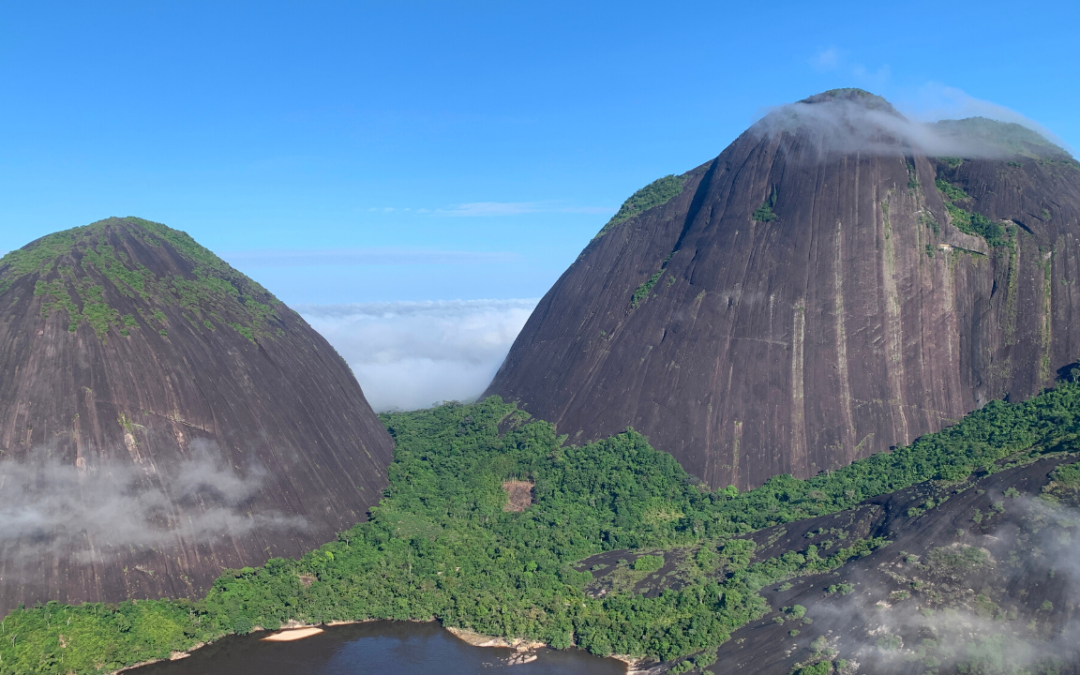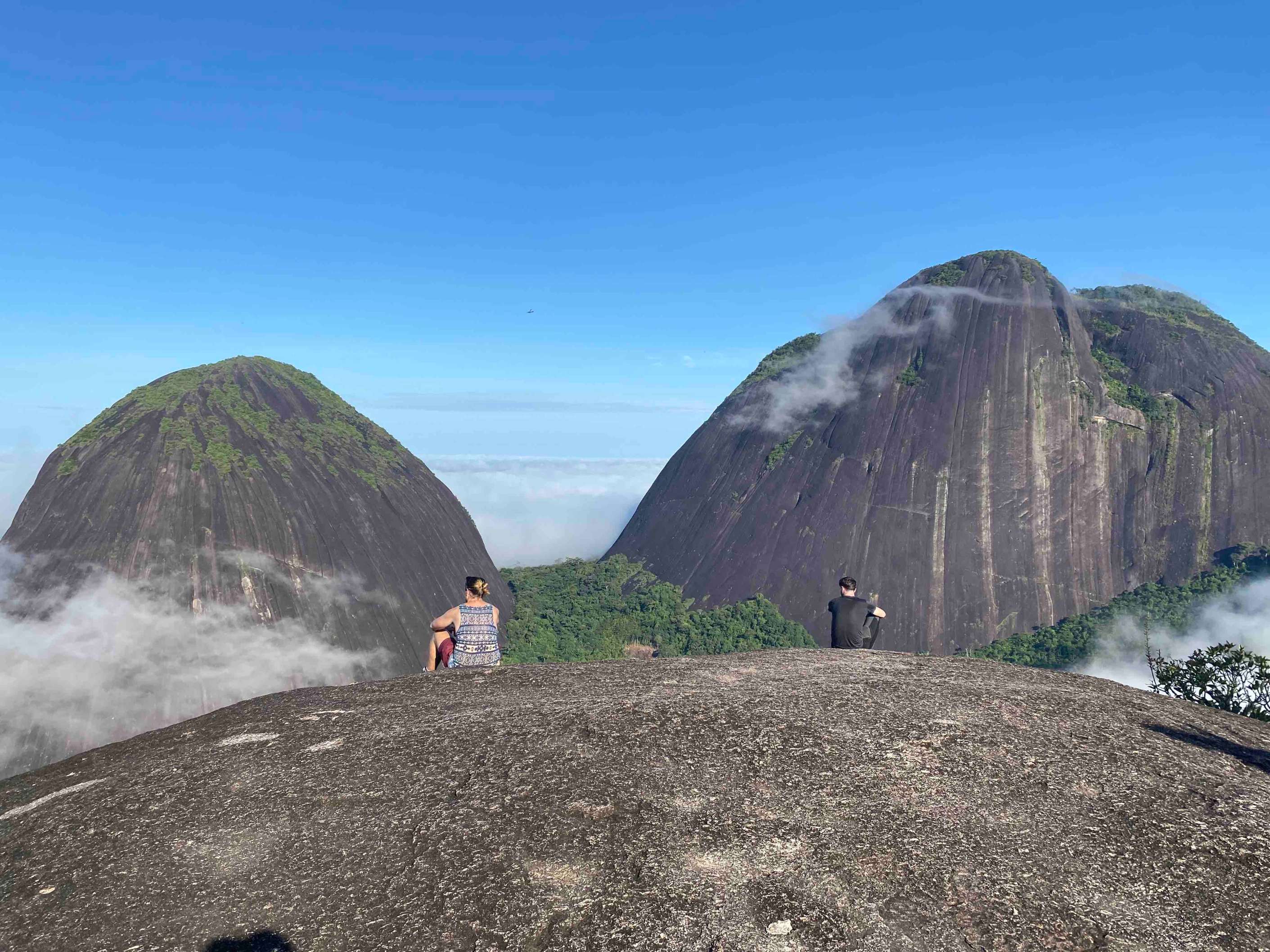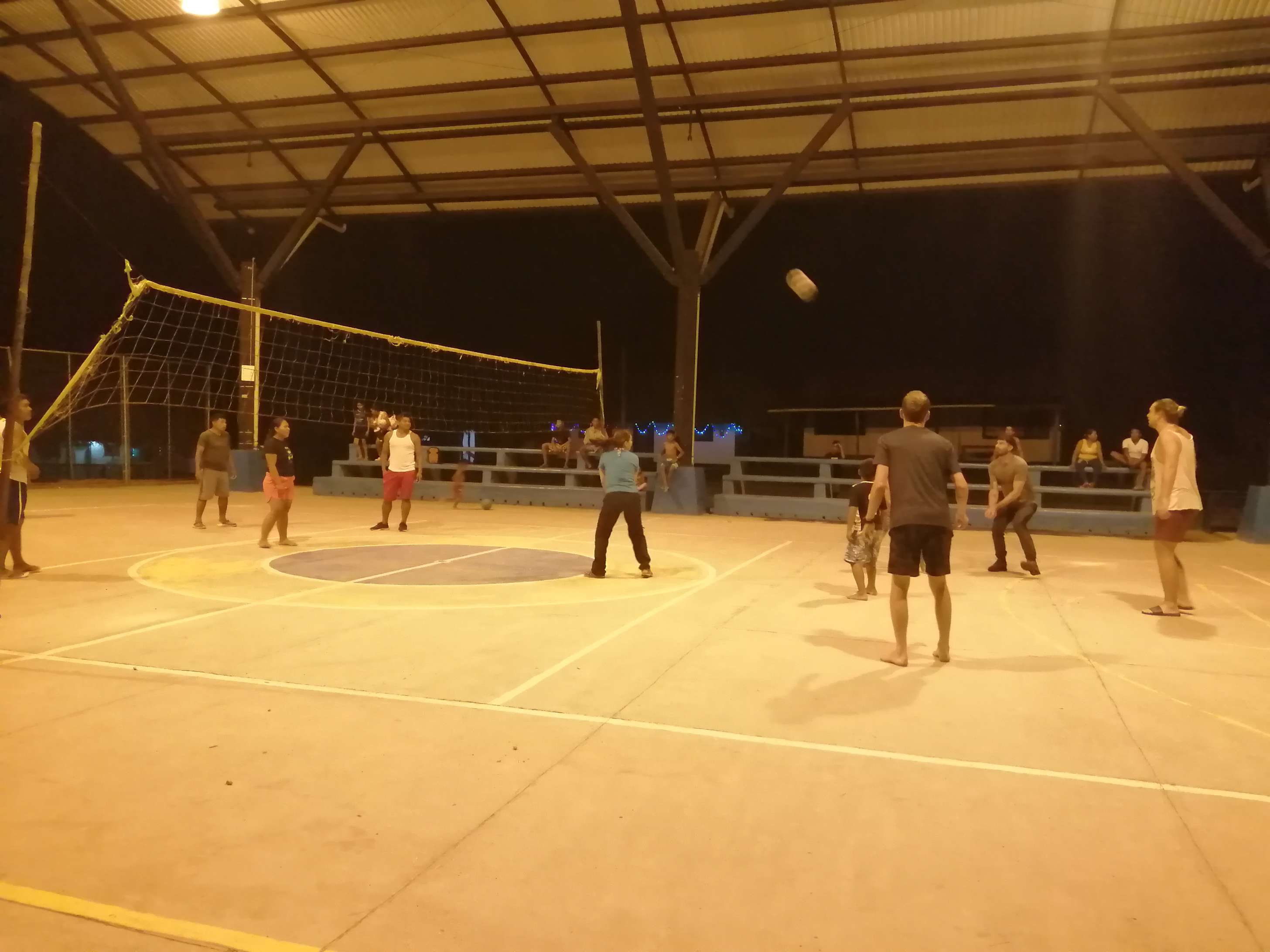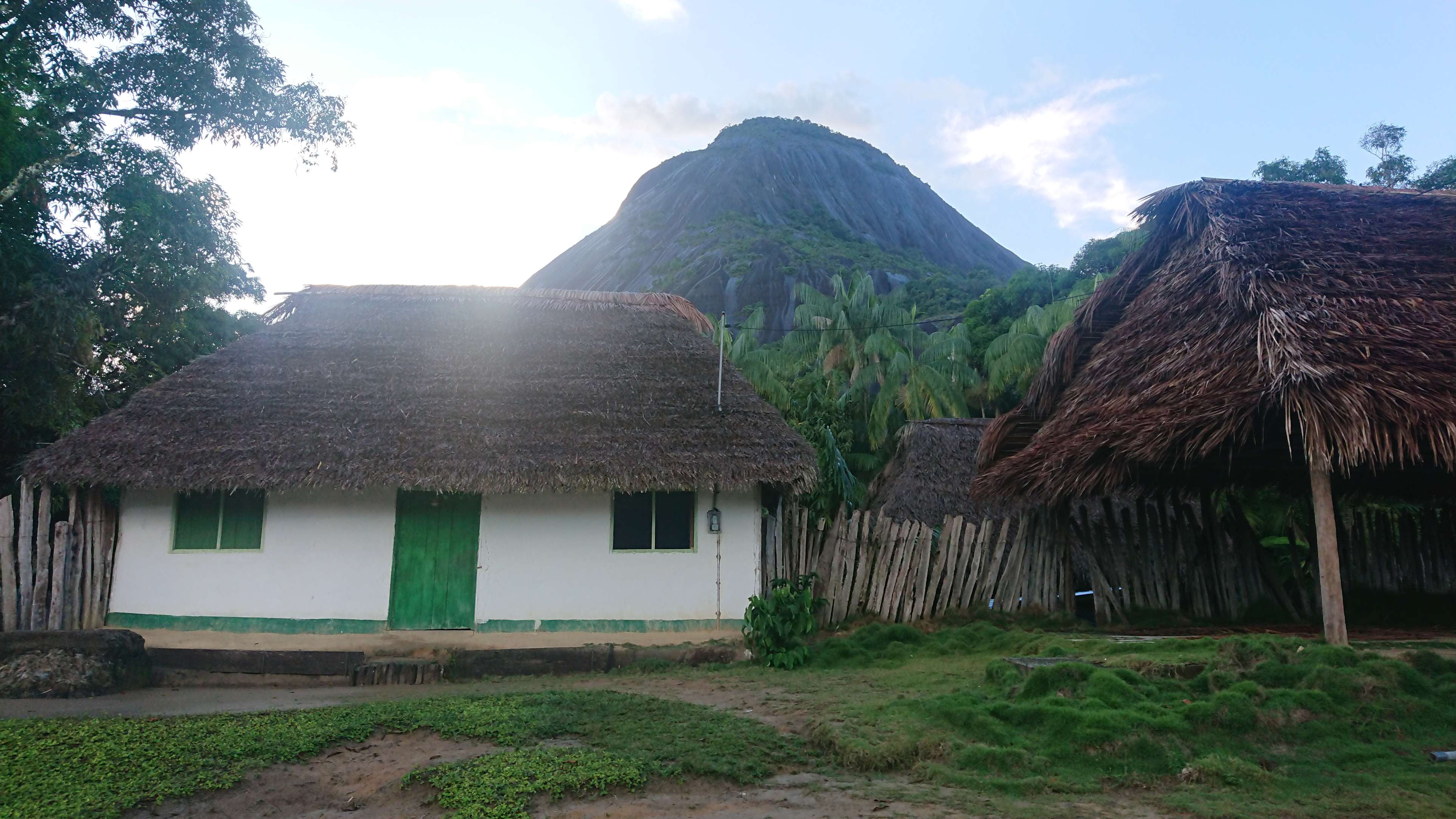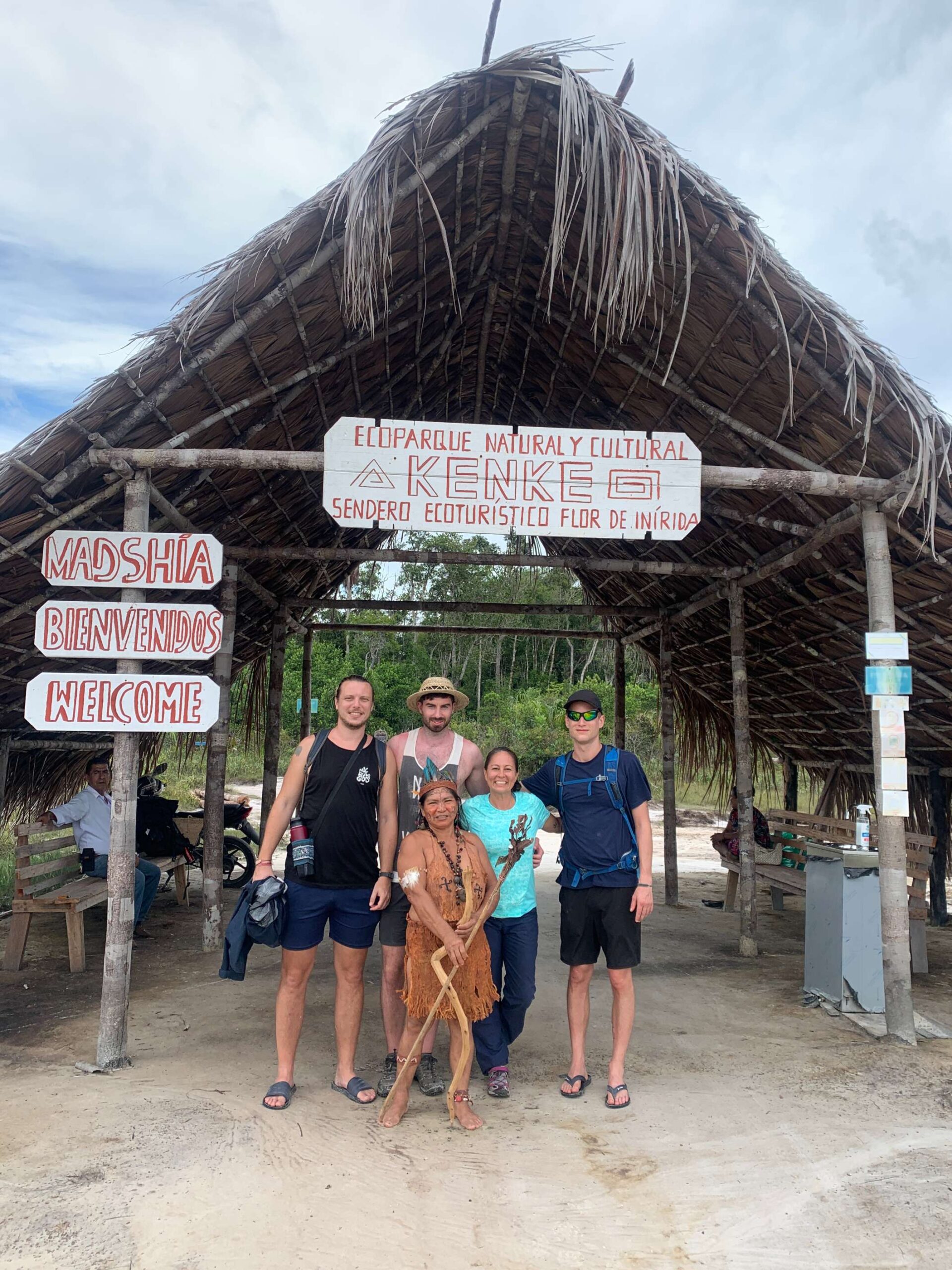A PDF titled Cerros de Mavecure landed in our WhatsApp group chat. *typing* Anyone keen for this trip in December? I made my mind up immediately. The itinerary ticked all the boxes; the Amazon jungle (I’d never been), epic landscapes, and staying with indigenous Colombian communities. It had the makings of a special trip.
This is an overview of our trip to Los Cerros de Mavecure with tour operator Sawa Travel.
Day 1 – Arriving to Puerto Inírida, Guainía
The sun was rising in Bogotá as we crammed into the Satena jet. In a few hours, we’d touch down in Puerto Inírida (pronounced in-id-ia), in the eastern Colombian department of Guainía. To be honest, I’d not heard of either before learning about the trip.
Now I know this region is home to Los Cerros de Mavecure. The rocky hills are among the oldest on the planet. The locals refer to their stone as Tepyues, meaning dwelling place of the God’s. I recommend watching the film “El Abrazo de la Serpiente” before or after going. Some of the film was filmed on location there and gives you an insight into the history of the region.
Anyway, as we approached the airport, thick, green jungle filled the plane’s oval windows. In fact, the cloud was so thick we had to do another pass before finding the runway. Meeting us at the airport was our trusted guide, Oscar.
The best fish I’ve ever eaten in my life
In Inírida, we dropped off our bags, smashed breakfast, and headed to Oscar’s home. He lived on a nature reserve/ camping spot out of town. It’s wonderfully set up to showcase the indigenous way of living; how to catch fish, shoot a bow & arrow, cultivate the land for farming, etc.
Oscar’s mum then put on a spread fit for the god’s. The smoked fish could have been the most expensive thing on a swanky London restaurant’s menu. And, how could I forget, the famous Guianían ají. When Colombians tell you their chili is picante, you take it with a pinch of salt. Not if they’re from Guainía. Theirs is bloody potent.
Day 2 – A day on the river
We set off early for the port. The majority of stuff got to Inírida by boat. Oddly, It seemed mattresses were in high demand. And, obviously, coca-bleenin’-cola. I’m yet to see a place on earth that isn’t littered with it.
We trudged along the stoney port beach to our lancha (speed boat). She bobbed gently in a fine blue cloud of gasoline fumes. Our captain René welcomed us aboard for what would be a long day on the river.
Al atardecer en Mavicure
We weaved down the Inírida River toward the trip’s main event; los Cerros de Mavecure. Any tiredness vanished as the peaks revealed themselves above the tree line. Another blessing from Mother Nature.

Los Cerros de Mavecure. On the left is Cerro Mavicure, In the middle el mono, and the right cerro pajerito.
Shortly after, we pulled into the community we’d be staying with. We dropped our bags and headed back out on the river to catch the sunset. Tomorrow we’d get up early to summit the smaller of the cerros – cerro Mavicure.
Day 3 – Waking up with Los Cerros de Mavecure
I and I imagine the entire community woke up to a loud cock. He strode around with his chest puffed out making his presence known. The regal bugger did his job, we were hiking by 6.30 am.
We got lucky with the weather. If it had been raining, we wouldn’t have been able to summit the slippy rocky surface (although, even when dry, I’d suggest using hiking shoes over trainers). The climb to the top of Cerro Mavicure was a steepish 1hr. Nothing too challenging. Besides, you’ll be stopping often for views like these…
Later, our host gave us a lovely tour around the community. Marcelino showed us their new medical center. They had doctors trained in western medicine and traditional plant medicine. The community now has access to solar power, giving them power up to 10 pm at night (no wifi mind you!). But, what I found most interesting was the sense of community. They have regular meetings with everyone in attendance. The leaders get to know everyone individually and to hear their problems first hand. The people meet at the town hall to share food and drink and what’s happening in their lives.
One evening, we even got to join in with a volleyball match. Their lack of time on social media seemed to translate into a high standard. Either that or we were embarrassingly awful!
Day 4 – Our last day with the epic Mavecure backdrop
I’d look up at el Cerro Pajarito like an awe-struck kid seeing his favorite football player. The godliness. The gratitude. The energy. I was felt unbelievably lucky to be there.
The rest of the morning we hiked around the back of the mountain to a small beach. There we bathed in the sweet waters and enjoyed our last moments before getting the lancha back to Inírida.
Day 5 – Final day of the tour
Our last day we spent buying souvenirs and gifts in the many artisanal shops. And, due to a delayed flight, we got to spend more time at Oscar’s family’s place. His mum put on another lovely spread and even gave us a blessing in her traditional dress as we left. She rounded off one of my favorite experiences in Colombia so far.
En fin.
I can’t recommend a trip to los Cerros de Mavecure enough. I was very impressed with the organisation and especially Oscar. He was only 23, yet had amazing knowledge and a lovely way with people. In fact, it was the people along the way that made the tour so special. Each had their own little stories to tell. Some hilarious and others sad & terrifying.
If you’d like to travel with Sawa, visit their website here (I have no affiliation with them). I did run into a few hurdles when booking which I have highlighted below.
Pre-trip considerations
Booking flights with Satena – their website didn’t accept any of my UK debit or credit cards. My friend had to pay for mine via Bancocolombia. If you have a student visa, it might be worth setting up Nequi to make easy payments.
Tour payments made via BancoColombia – another slight issue with payment because I don’t have Colombian cards. However, it’s easy to go to a Banco Colombia “a la mano” point in a supermarket or tienda to make the payment. The travel company will give you the details.
Delayed flights – It’s probable the Satena flight will be delayed. On the way back to Bogotá we got a letter from the Satena desk at the airport. We then took it to the Avianca check-in desk at Bogotá. They put us on another flight home to Medellín, no questions asked.
Nick
P.S.
If you have any questions, let me know in the comments!

